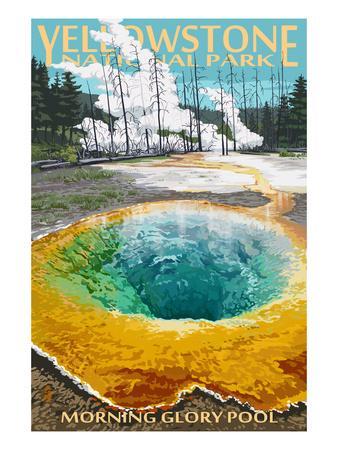Bra priser, ingen reservasjonsgebyr. Velg Blant et Stort Utvalg av Overnattingssteder Hos Booking. Most of Earths history (from the formation of the earthbillion years ago to approximately 5million years ago) is known as the Precambrian time. During the Precambrian and the subsequent Paleozoic and Mesozoic eras (5to million years ago), the western United States was covered at times by oceans, sand dunes, tidal flats, and vast plains.
From the end of the Mesozoic through the early Cenozoic, mountain-building processes formed the Rocky Mountains. The Absaroka Range along the parks north and east sides was formed by numerous volcanic eruptions about million years ago.
Approximately million years ago, vast expanses of todays West began stretching apart along an eastwest axis. Nevada, Oregon, and Idaho.

This shallow body of magma is caused by heat convection in the mantle. Plumes of magma rise through the mantle, melting rocks in the crust, and creating magma reservoirs of partially molten, partially solid rock. Mantle plumes transport heat from deep in the mantle to the crust and create what we call hot spot volcanism.
Hot spots leave a trail of volcanic activity as tectonic plates drift over them. Heat from the shallowest magma chamber caused an area of the crust above it to expand and rise. Stress on the overlying crust resulted in increased earthquake activity along newly formed faults.
Eventually, these faults reached the magma chamber and magma oozed through the cracks. Escaping magma released pressure within the chamber, which also allowed volcanic gasses to escape and expand explosively in a massive volcanic eruption.
The eruption spewed copious volcanic ash and gas into the atmosphere and produced fast, super-hot debris flows (pyroclastic flows) over the existing landscape. Helens, in Washington.

A second significant, though smaller, volcanic eruption occurred within the western edge of the first caldera approximately 1. Since then, smaller eruptions have occurred. During and after these explosive eruptions huge lava flows of viscous rhyolitic lava and less voluminous basalt lava flows partially filled the caldera floor and surrounding terrain.
Magma may be as little as miles beneath Sour Creek Dome and 8miles beneath Mallard Lake Dome, and both domes inflate and subside as the volume of magma or hydrothermal fluids changes beneath them. The entire caldera floor lifts up or subsides, too, but not as much as the two domes. In the past century, the net inflation has tilted the caldera floor toward the south.
Remarkable ground deformation has been documented along the central axis of the caldera between Old Faithful and White Lake in Pelican Valley in historic time. See full list on nps.
The uplift is believed to be caused by the movement of deep hydrothermal fluids or molten rock into the shallow crustal magma system at a depth of about km beneath the surface. A caldera may undergo episodes of uplift and subsidence for thousands of years without erupting.
Notably, changes in uplift and subsidence have been correlated with increases of earthquake activity. The most likely activity would be lava flows, such as those that occurred after the last major eruption.

A lava flow would ooze slowly over months and years, allowing plenty of time for park managers to evaluate the situation and protect people. No scientific evidence indicates such a lava flow will occur soon. Scientists also collect information is on temperature, chemistry, and gas concentrations at selected hydrothermal features and chloride concentrations in major rivers. Geological Society of America Bulletin.
As you walk around the park you may think: “I don’t see any volcanos? That’s because much of the entire park is a volcano – and the bubbling geysers and hot springs are an indication of the churning activity below the surface.
The caldera and most of the park are located in the northwest corner of Wyoming. A plume of molten rock that rises beneath the park creates one of the world’s largest active volcanoes, and we can see evidence all around us in the form of geysers and hot springs. But it also has an unparalleled potential to destroy. Den var ved opprettelsen også verdens første nasjonalpark.
A second cycle concluded with the eruption of the much smaller Mesa Falls Tuff around 1. The USGS arm of YVO is also responsible for monitoring and reporting on volcanic activity in the intermountain. The park contains about half of the Earth’s geothermal features and about percent of all the world’s geysers. MUD VOLCANO Temperature 184°F Dimensions 27xfeet.
At that time Mud Volcano was a very active mud spring with bellowing and exploding mud. In later years since its discovery it has not shown the same forcefulness. Sitting on top of an active volcano, this park is home to thousands of hydrothermal features, hundreds of geysers and waterfalls, deep rust-colored canyons, and wildlife that often spills out of the pine forests and verdant grasslands and onto the.
Yellowstone Volcano Observatory. Opplev landets vakreste teaterbygg, midt i Oslo. Se både klassikere og samtidsdrama. Les om forestillingene og kjøp billett på nett, eller utforsk bygget med en omvisning.
Gi en opplevelse i gave! Få billetter i salg. Credit: IOThe cause of the volcano is. When the last eruption took place about 640years ago it is believed that it caused the last ice age. The explosion also spewed volcanic ash over half of the United States, reaching areas of as far away as Texas, Louisiana and southern California, according to the U.